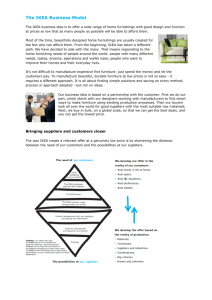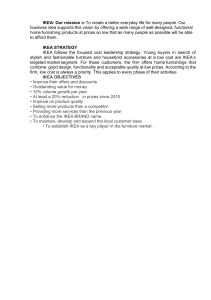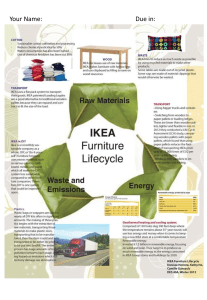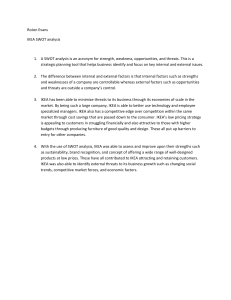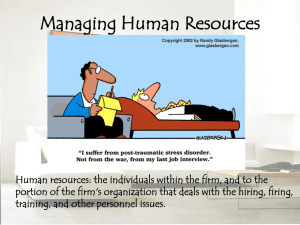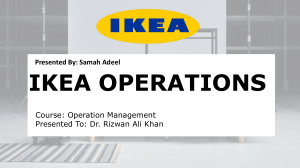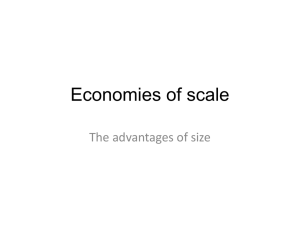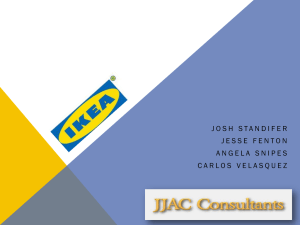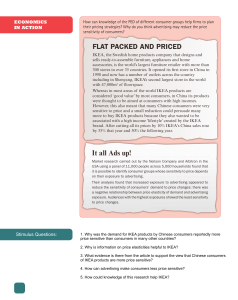Deliver the Value: IKEA Case Study IKEA is a Swedish
advertisement
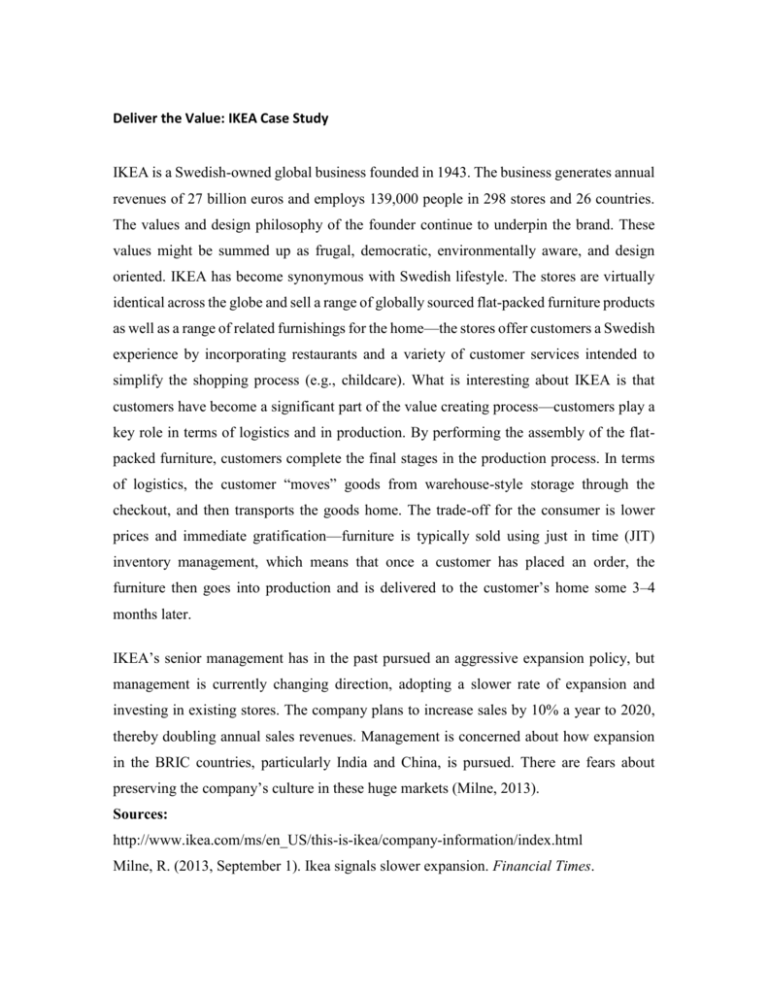
Deliver the Value: IKEA Case Study IKEA is a Swedish-owned global business founded in 1943. The business generates annual revenues of 27 billion euros and employs 139,000 people in 298 stores and 26 countries. The values and design philosophy of the founder continue to underpin the brand. These values might be summed up as frugal, democratic, environmentally aware, and design oriented. IKEA has become synonymous with Swedish lifestyle. The stores are virtually identical across the globe and sell a range of globally sourced flat-packed furniture products as well as a range of related furnishings for the home—the stores offer customers a Swedish experience by incorporating restaurants and a variety of customer services intended to simplify the shopping process (e.g., childcare). What is interesting about IKEA is that customers have become a significant part of the value creating process—customers play a key role in terms of logistics and in production. By performing the assembly of the flatpacked furniture, customers complete the final stages in the production process. In terms of logistics, the customer “moves” goods from warehouse-style storage through the checkout, and then transports the goods home. The trade-off for the consumer is lower prices and immediate gratification—furniture is typically sold using just in time (JIT) inventory management, which means that once a customer has placed an order, the furniture then goes into production and is delivered to the customer’s home some 3–4 months later. IKEA’s senior management has in the past pursued an aggressive expansion policy, but management is currently changing direction, adopting a slower rate of expansion and investing in existing stores. The company plans to increase sales by 10% a year to 2020, thereby doubling annual sales revenues. Management is concerned about how expansion in the BRIC countries, particularly India and China, is pursued. There are fears about preserving the company’s culture in these huge markets (Milne, 2013). Sources: http://www.ikea.com/ms/en_US/this-is-ikea/company-information/index.html Milne, R. (2013, September 1). Ikea signals slower expansion. Financial Times. Case Study Guidelines 1. Analysis of the Current Situation—the proper context must be established for the case analysis. Please provide a SWOT analysis in a SWOT box. Research: Identify the key environmental factors such as industry trends, level of competitiveness, customer perceptions, legal considerations, and evolving technology at the outset of the analysis. Summarize the key aspects of the internal environment of the firm in terms of strengths and weaknesses and the external environment in terms of opportunities and threats to the firm in your SWOT box. 2. The Target Market—Identify your target market: Who is your target customer? In terms of demographics and lifestyle, what aspects of consumer behavior provide insights into this group of customers? 3. The Problem—Identification of key problem(s). It is easy to identify symptoms of problems while failing to identify the real problems. For example, declining sales may be identified as a problem, when the decline is only symptomatic of more complex problems that are harder to observe. Make a clear distinction between what is identified as the problem and the symptoms of the problems. 4. Alternative Solutions—Identify and evaluate alternatives. Develop reasonable alternatives and evaluate them in terms of feasibility, projected costs advantages, disadvantages, and potential short-term and long-term consequences. 5. Recommended Course of Action—Select a course of action and provide the appropriate strategies and tactics to accomplish the chosen course. Justify your choice in terms of your analysis. As most practitioners know, charting a course of action can be a difficult job, but implementation is the true challenge. Produce a workable action plan that would have a reasonable probability of success in the implementation phase.
